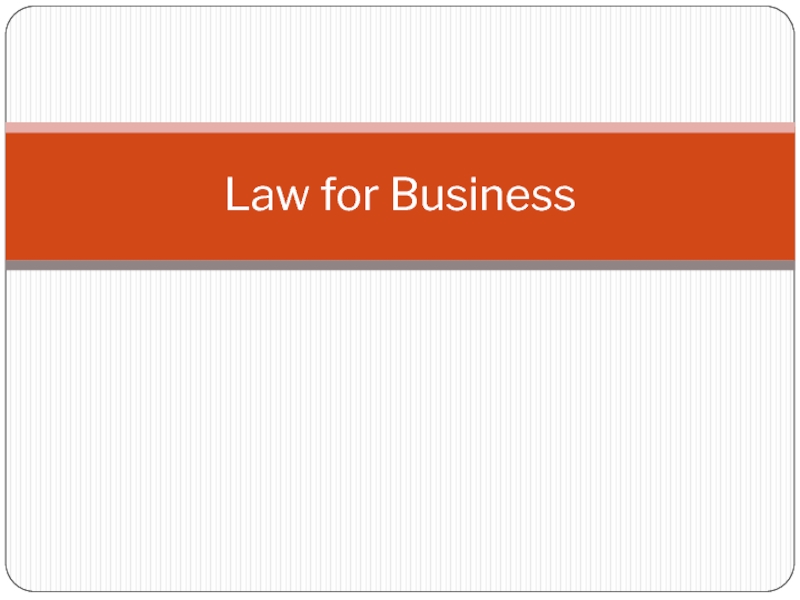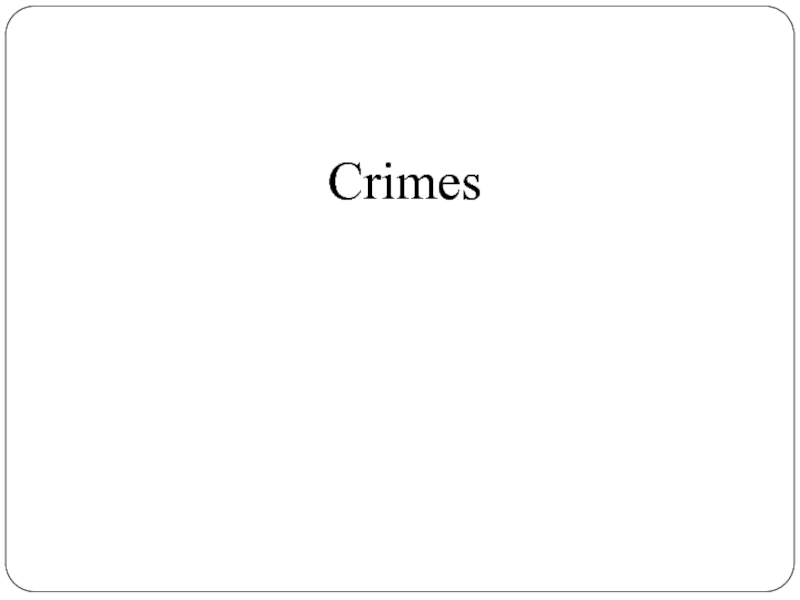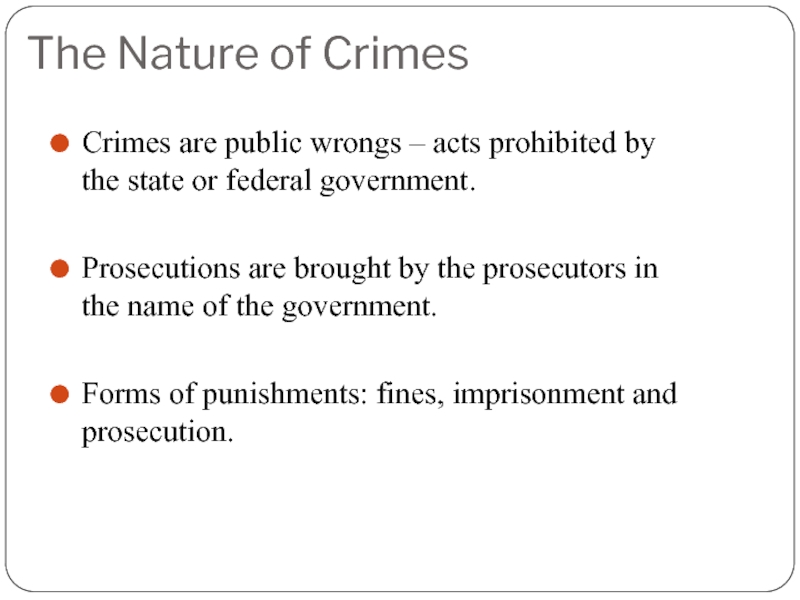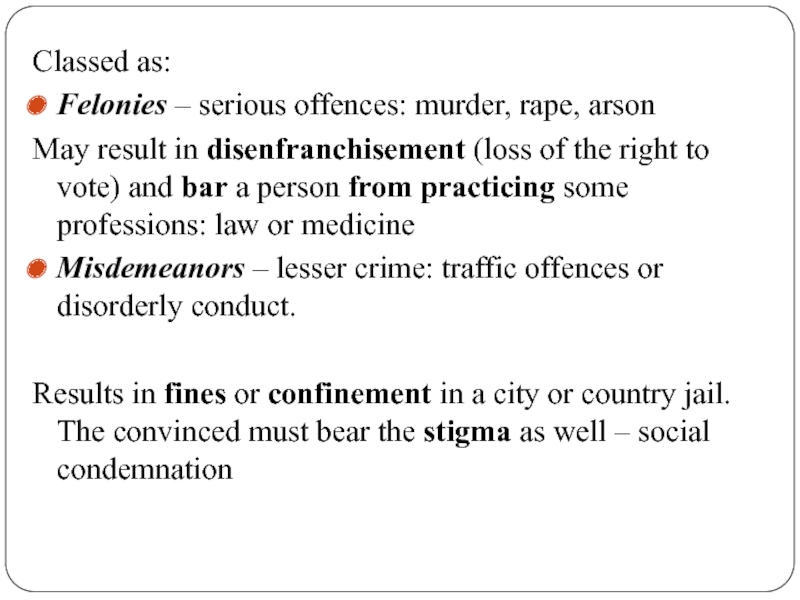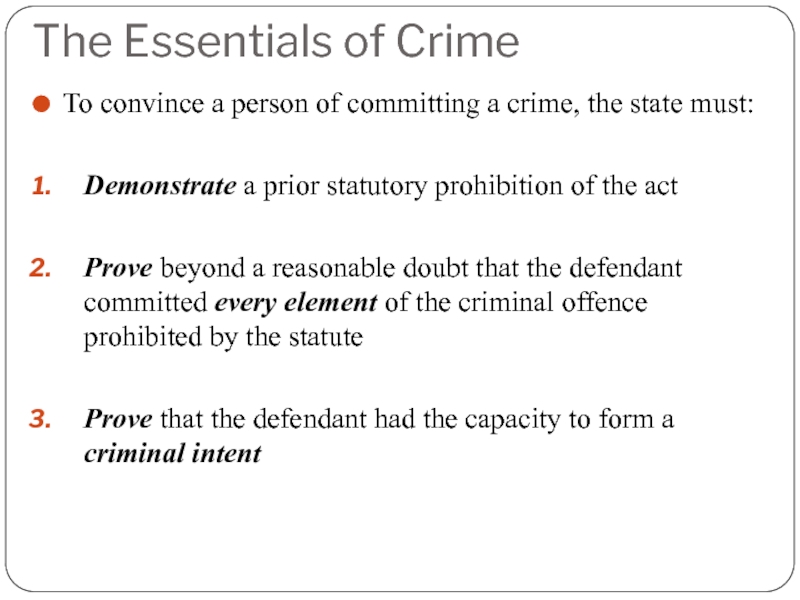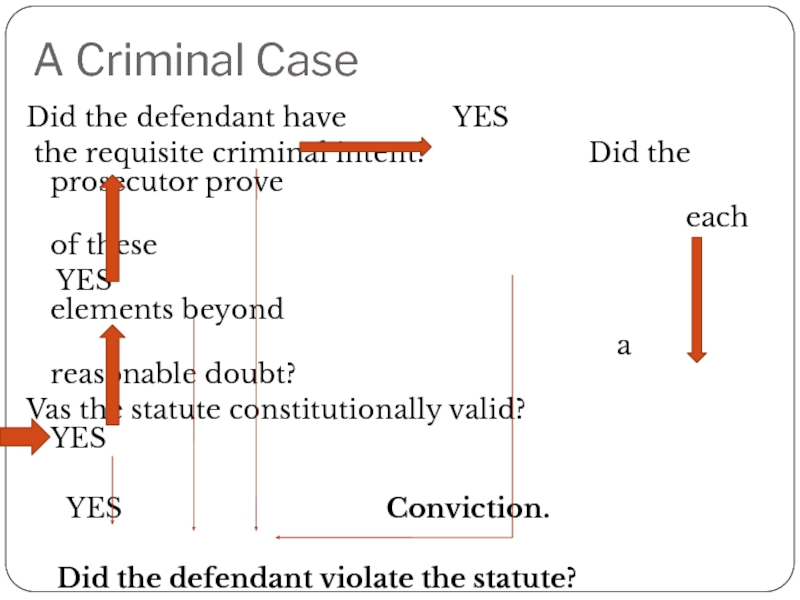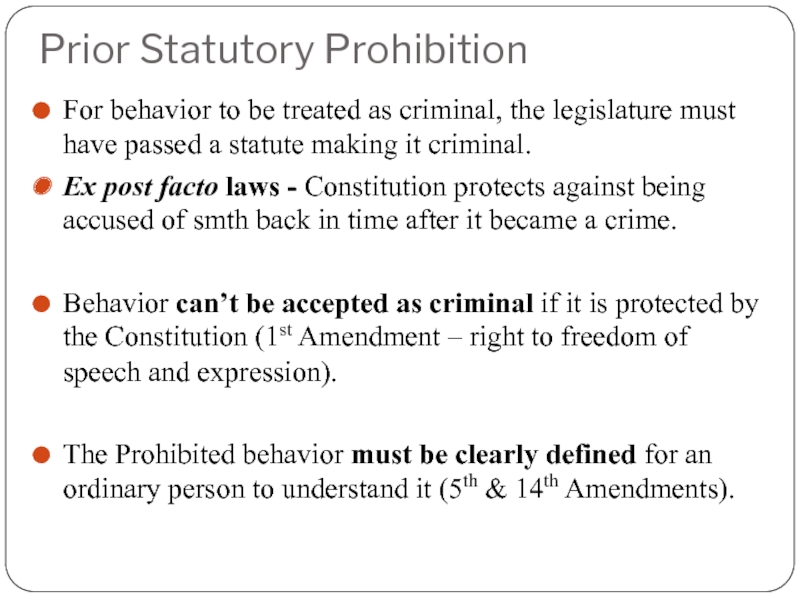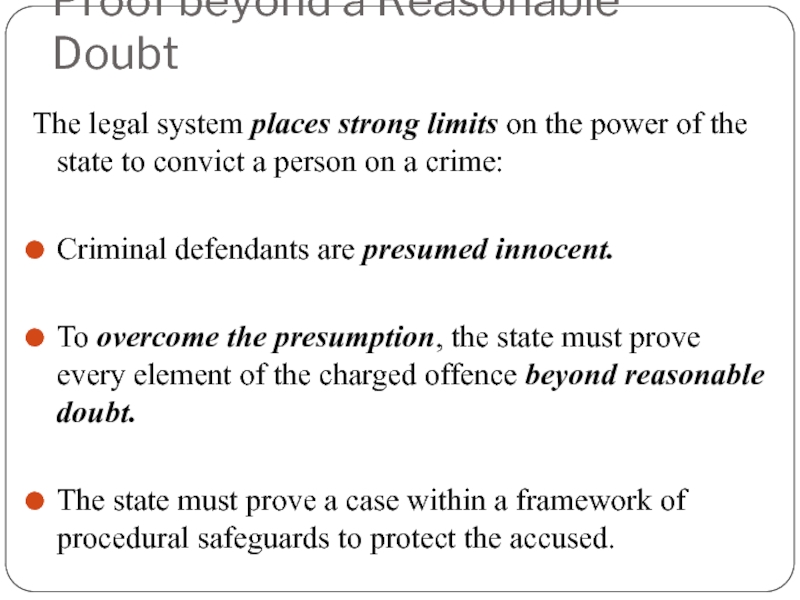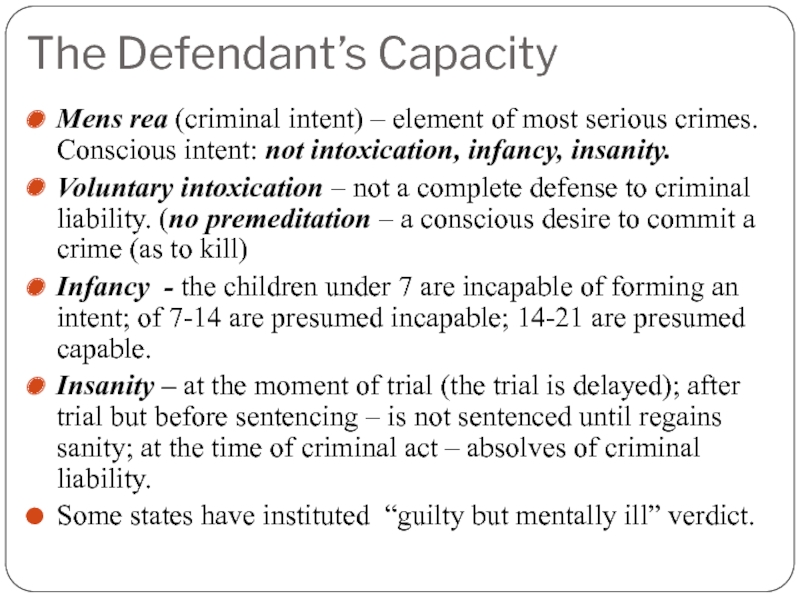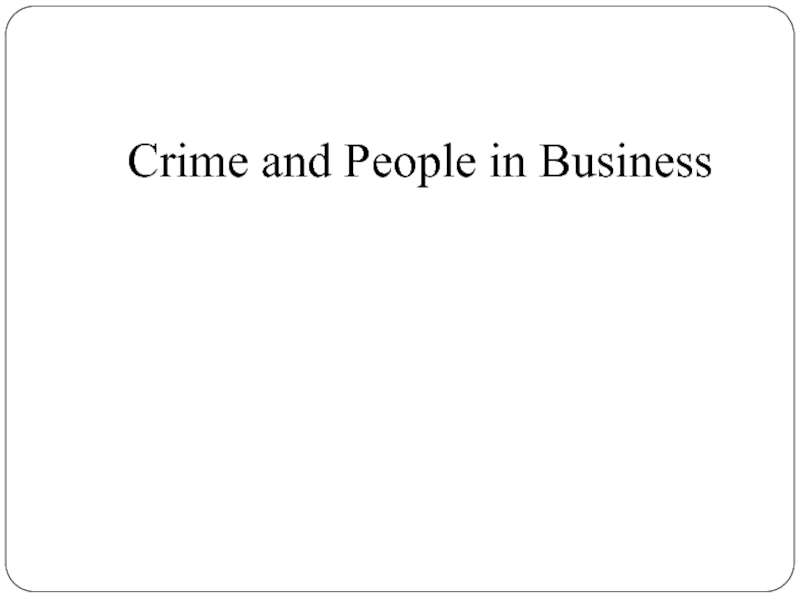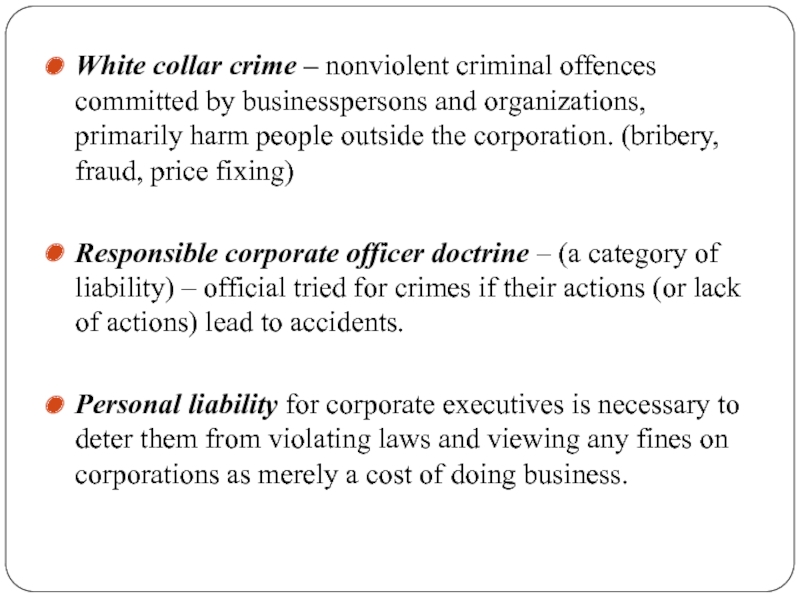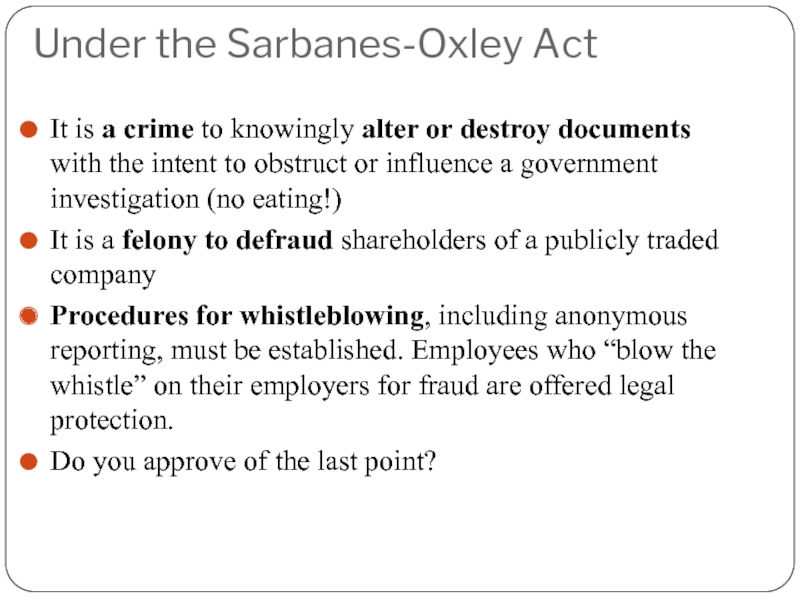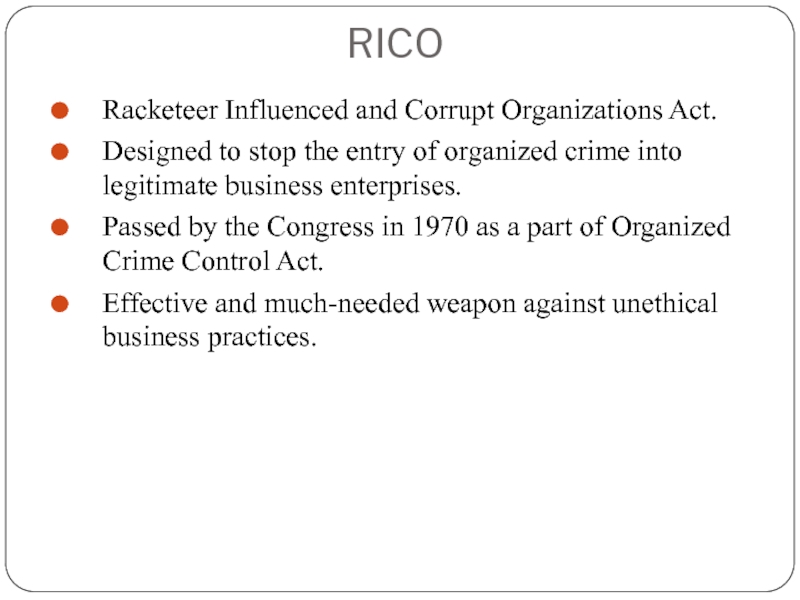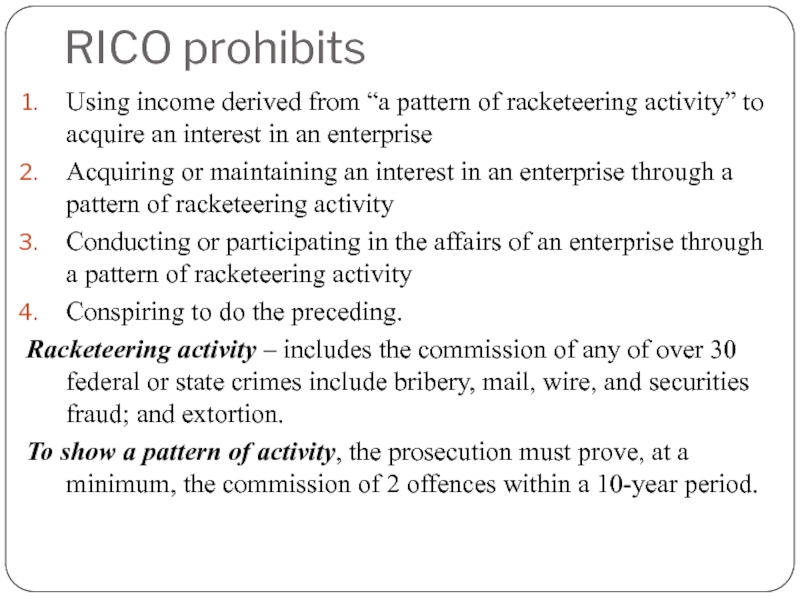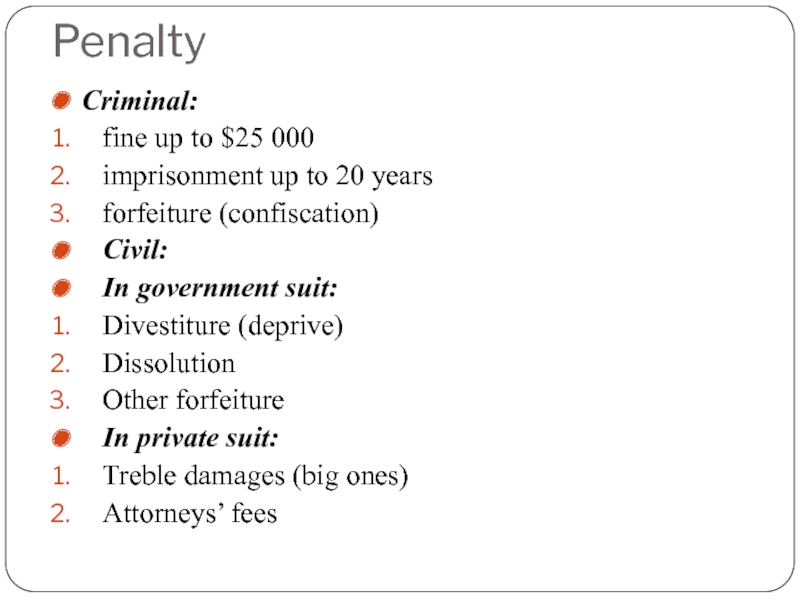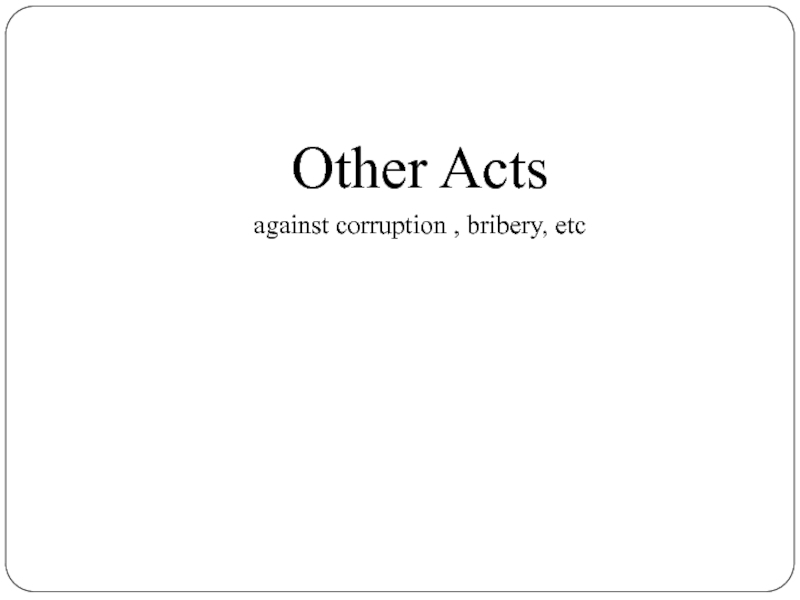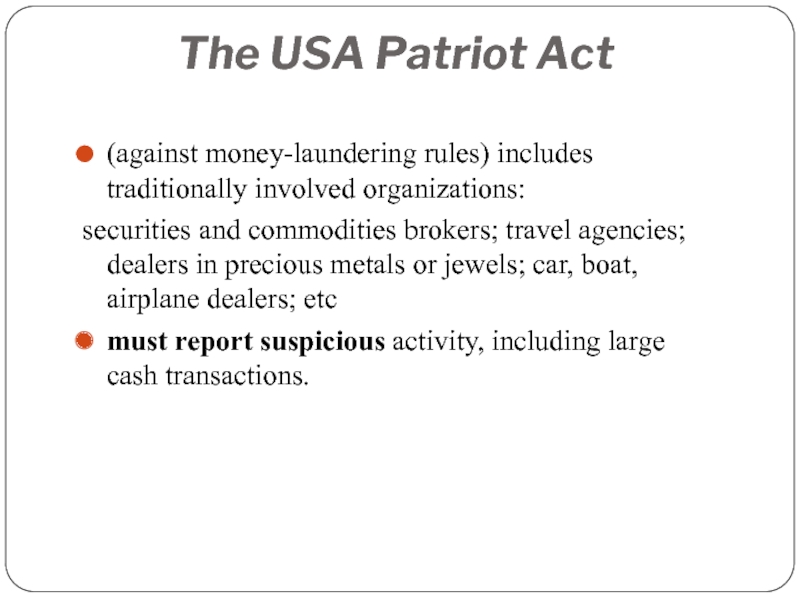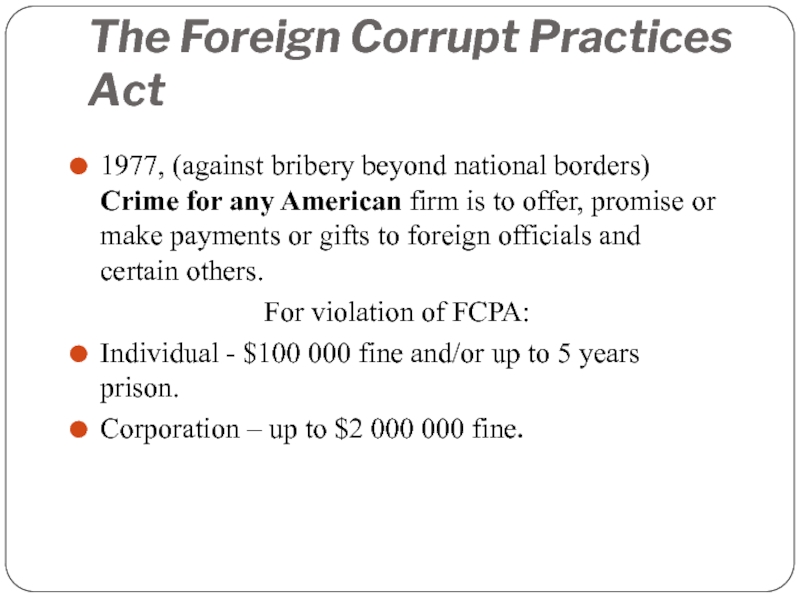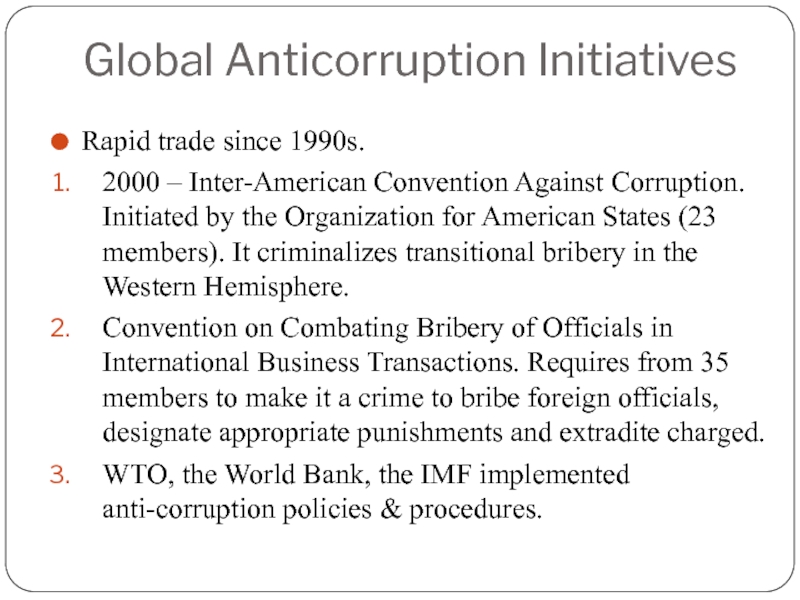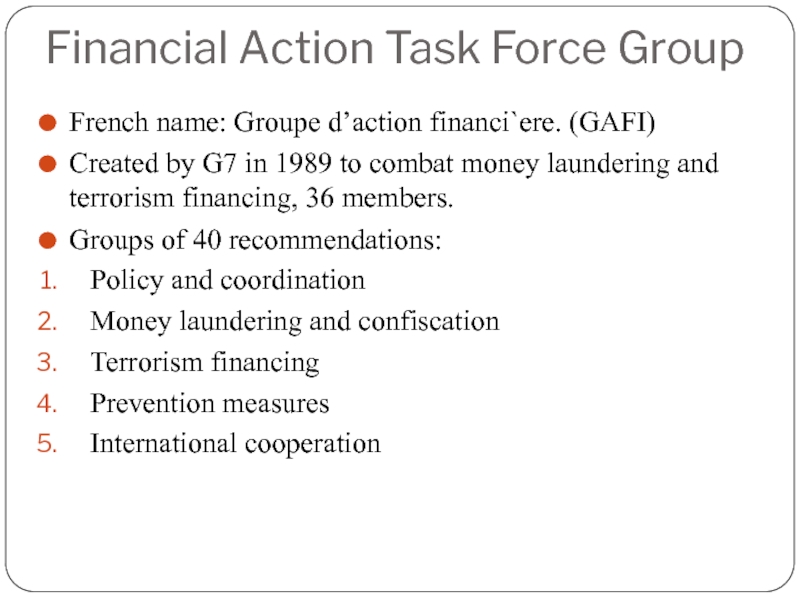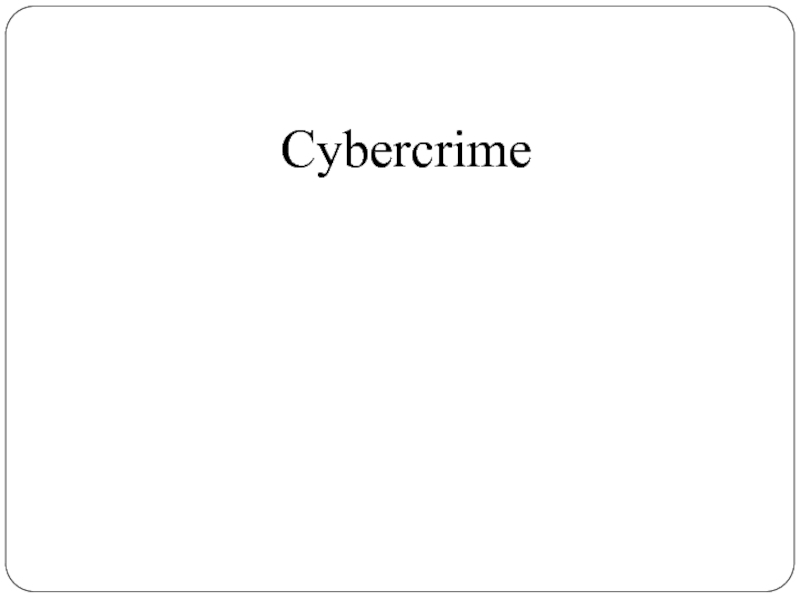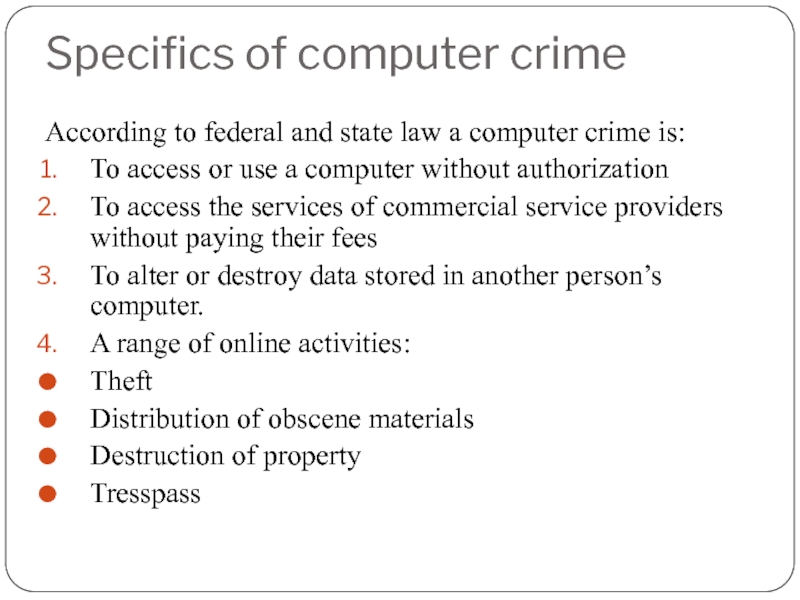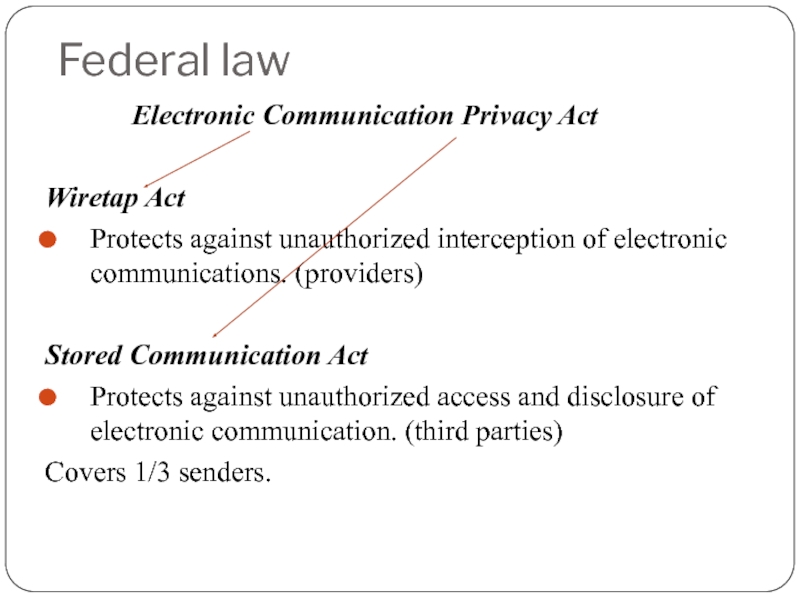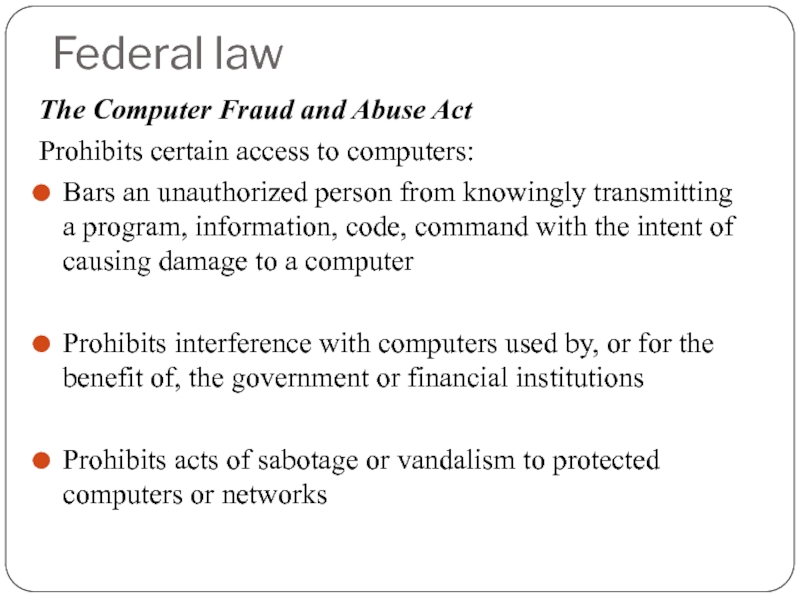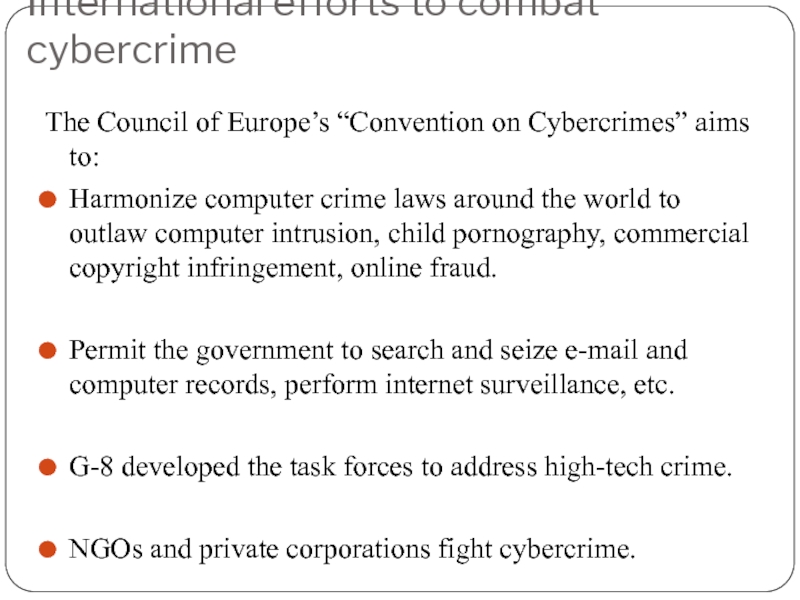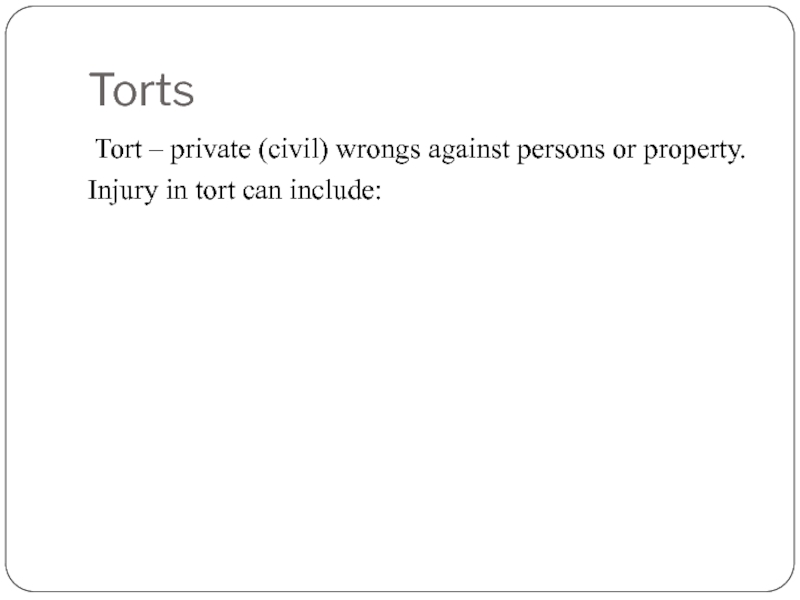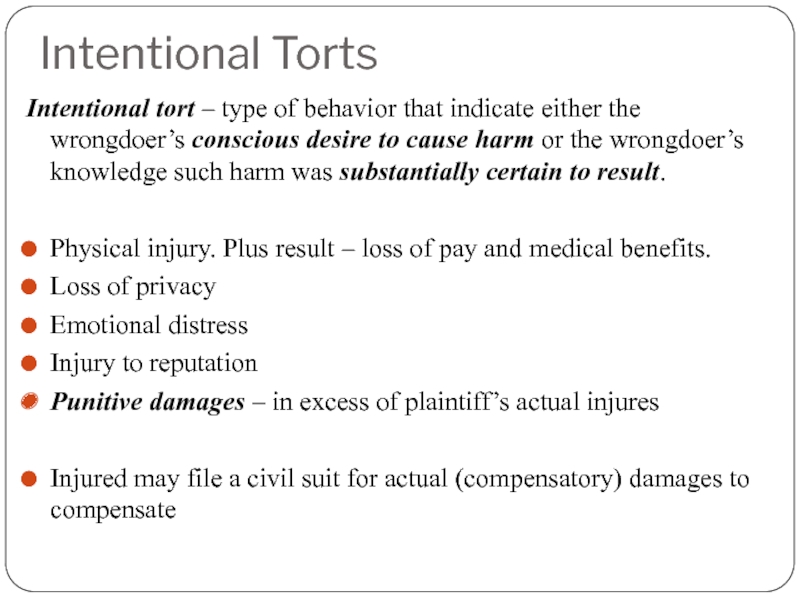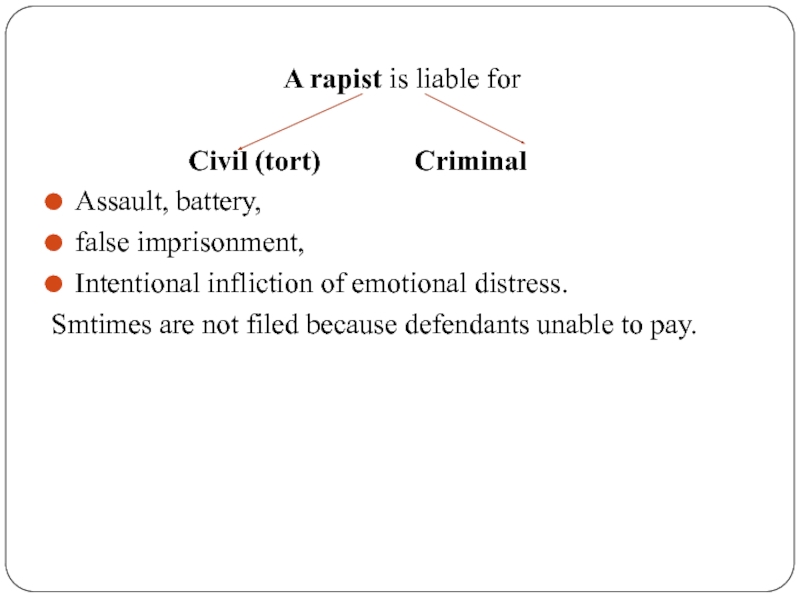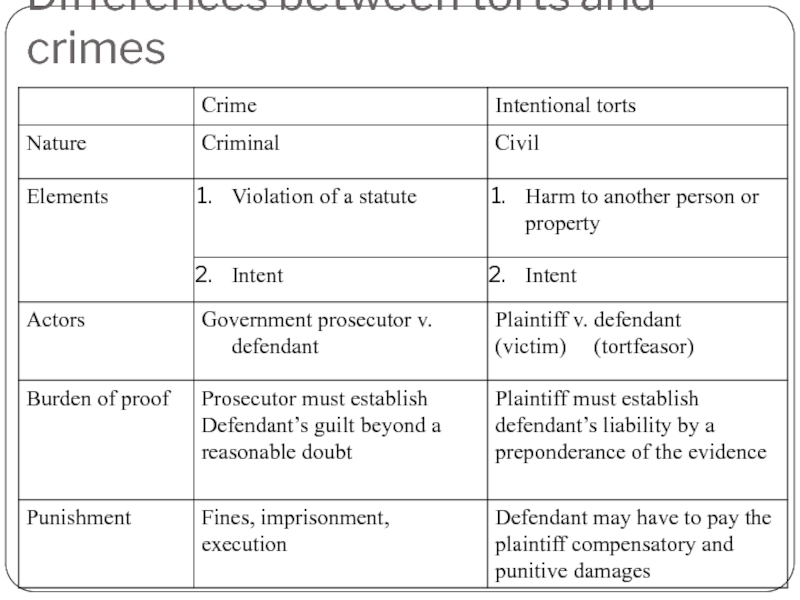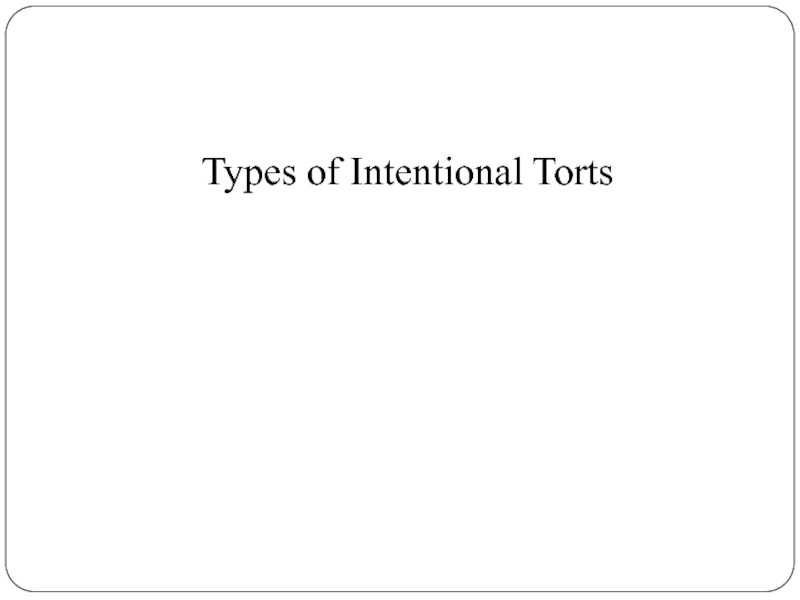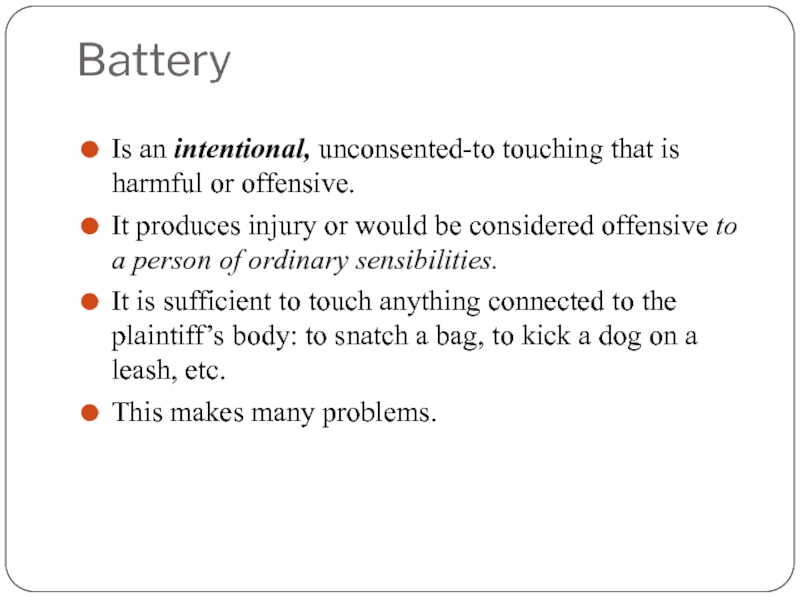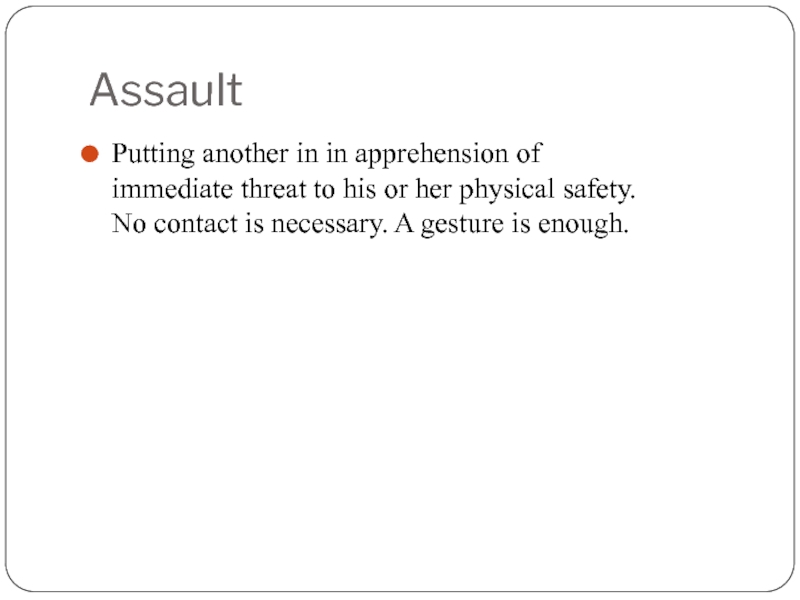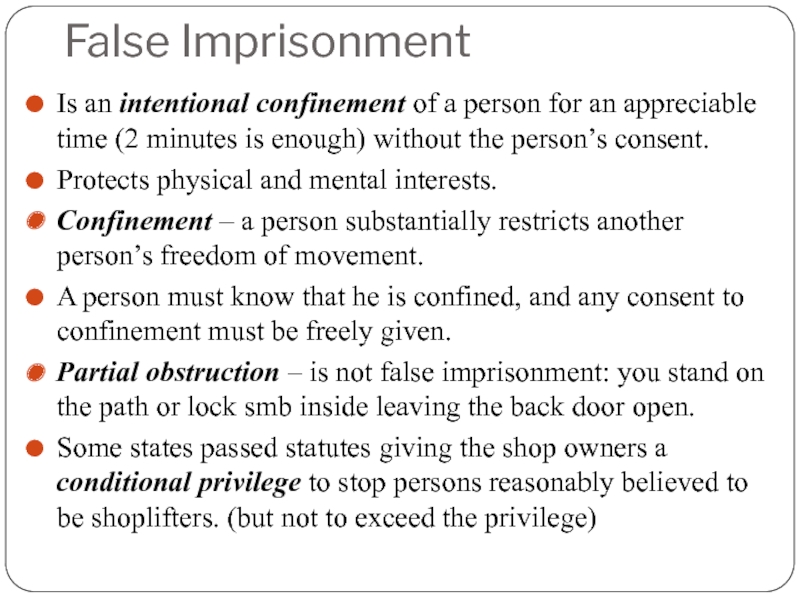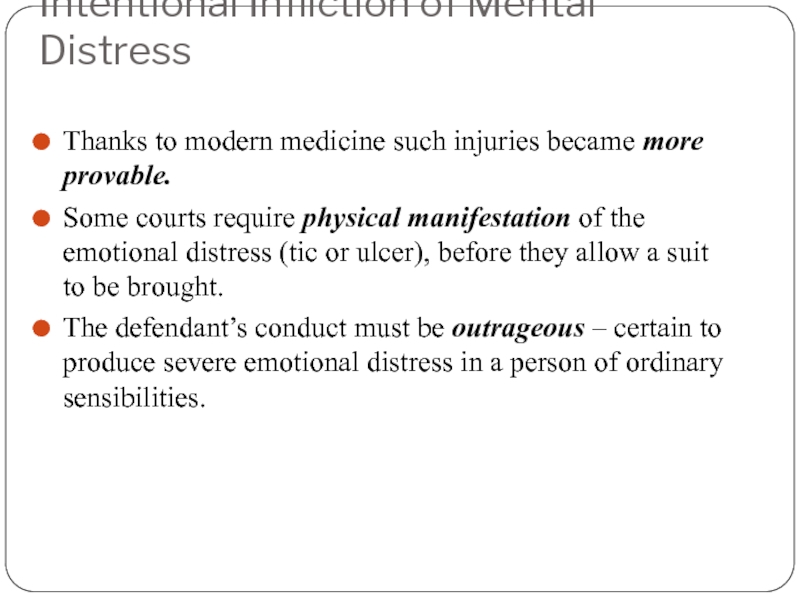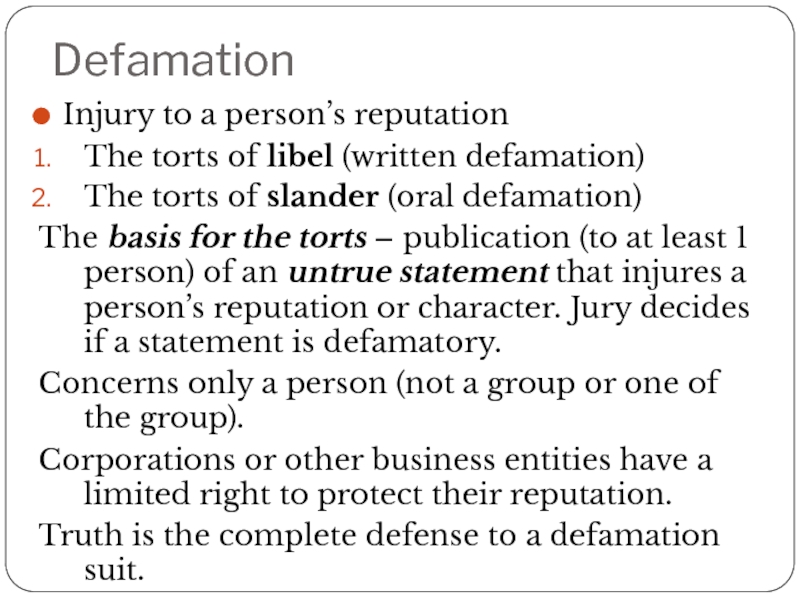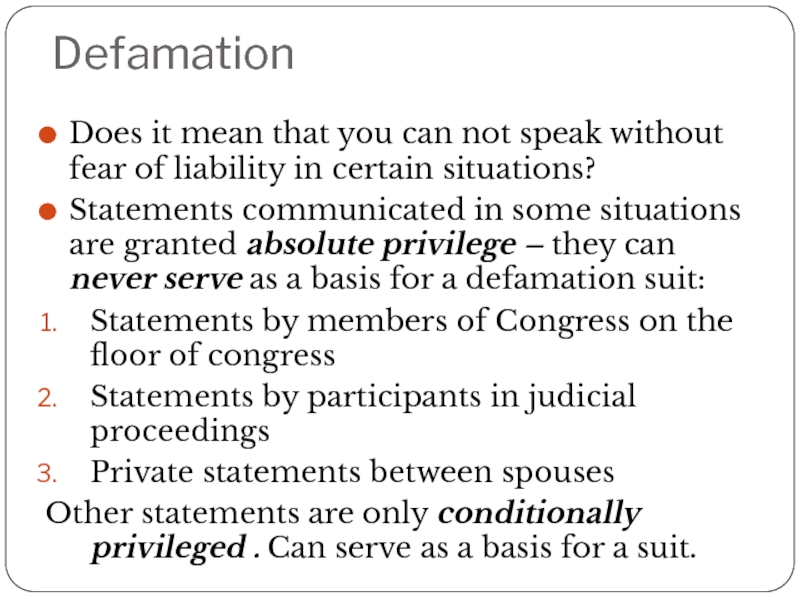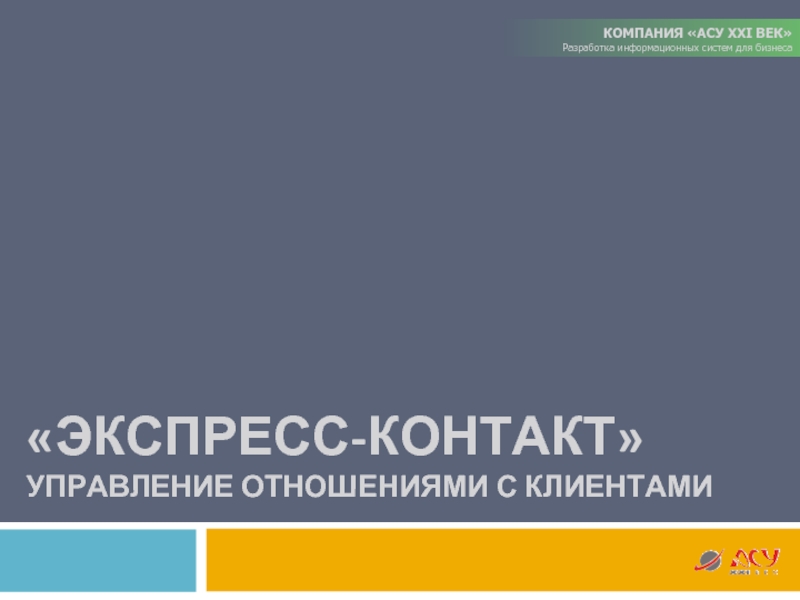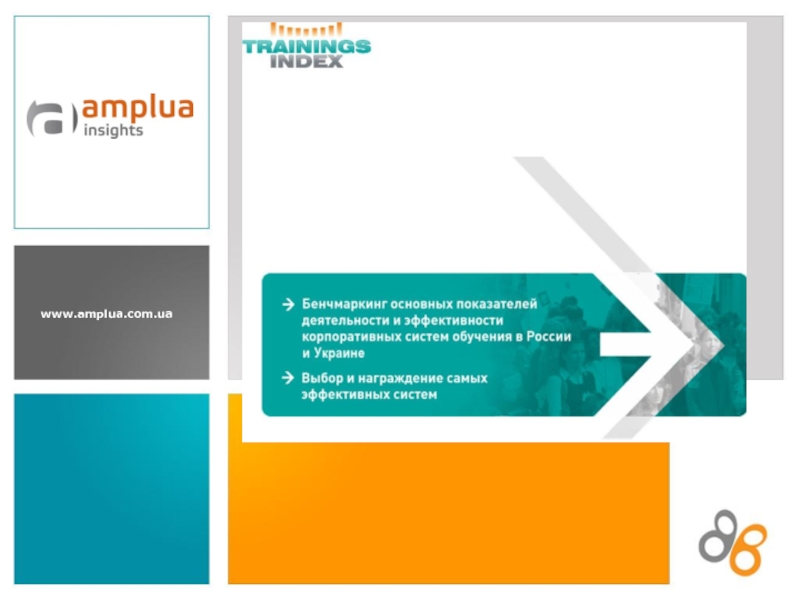- Главная
- Разное
- Дизайн
- Бизнес и предпринимательство
- Аналитика
- Образование
- Развлечения
- Красота и здоровье
- Финансы
- Государство
- Путешествия
- Спорт
- Недвижимость
- Армия
- Графика
- Культурология
- Еда и кулинария
- Лингвистика
- Английский язык
- Астрономия
- Алгебра
- Биология
- География
- Детские презентации
- Информатика
- История
- Литература
- Маркетинг
- Математика
- Медицина
- Менеджмент
- Музыка
- МХК
- Немецкий язык
- ОБЖ
- Обществознание
- Окружающий мир
- Педагогика
- Русский язык
- Технология
- Физика
- Философия
- Химия
- Шаблоны, картинки для презентаций
- Экология
- Экономика
- Юриспруденция
Law for Business. The Nature of Crimes презентация
Содержание
- 1. Law for Business. The Nature of Crimes
- 2. Crimes
- 3. The Nature of Crimes Crimes are public
- 4. Classed as: Felonies – serious offences:
- 5. The Essentials of Crime To convince a
- 6. A Criminal Case Did the defendant have
- 7. Prior Statutory Prohibition For behavior to be
- 8. Proof beyond a Reasonable Doubt The legal
- 9. The Defendant’s Capacity Mens rea (criminal intent)
- 10. Crime and People in Business
- 11. White collar crime – nonviolent criminal offences
- 12. Under the Sarbanes-Oxley Act It is a
- 13. RICO Racketeer Influenced and Corrupt Organizations Act.
- 14. RICO prohibits Using income derived from “a
- 15. Penalty Criminal: fine up to $25
- 16. Other Acts against corruption , bribery, etc
- 17. The USA Patriot Act (against money-laundering
- 18. The Foreign Corrupt Practices Act 1977, (against
- 19. Global Anticorruption Initiatives Rapid trade since 1990s.
- 20. Financial Action Task Force Group French name:
- 21. Cybercrime
- 22. Specifics of computer crime According to
- 23. Federal law
- 24. Federal law The Computer Fraud and Abuse
- 25. International efforts to combat cybercrime The Council
- 26. Torts Tort – private (civil) wrongs
- 27. Intentional Torts Intentional tort – type of
- 28. A rapist is liable for
- 29. Differences between torts and crimes
- 30. Types of Intentional Torts
- 31. Battery Is an intentional, unconsented-to touching that
- 32. Assault Putting another in in apprehension of
- 33. False Imprisonment Is an intentional confinement of
- 34. Intentional Infliction of Mental Distress Thanks to
- 35. Defamation Injury to a person’s reputation The
- 36. Defamation Does it mean that you
Слайд 3The Nature of Crimes
Crimes are public wrongs – acts prohibited by
the state or federal government.
Prosecutions are brought by the prosecutors in the name of the government.
Forms of punishments: fines, imprisonment and prosecution.
Prosecutions are brought by the prosecutors in the name of the government.
Forms of punishments: fines, imprisonment and prosecution.
Слайд 4Classed as:
Felonies – serious offences: murder, rape, arson
May result
in disenfranchisement (loss of the right to vote) and bar a person from practicing some professions: law or medicine
Misdemeanors – lesser crime: traffic offences or disorderly conduct.
Results in fines or confinement in a city or country jail. The convinced must bear the stigma as well – social condemnation
Misdemeanors – lesser crime: traffic offences or disorderly conduct.
Results in fines or confinement in a city or country jail. The convinced must bear the stigma as well – social condemnation
Слайд 5The Essentials of Crime
To convince a person of committing a crime,
the state must:
Demonstrate a prior statutory prohibition of the act
Prove beyond a reasonable doubt that the defendant committed every element of the criminal offence prohibited by the statute
Prove that the defendant had the capacity to form a criminal intent
Demonstrate a prior statutory prohibition of the act
Prove beyond a reasonable doubt that the defendant committed every element of the criminal offence prohibited by the statute
Prove that the defendant had the capacity to form a criminal intent
Слайд 6A Criminal Case
Did the defendant have
YES
the requisite criminal intent? Did the prosecutor prove
each of these
YES elements beyond
a reasonable doubt?
Vas the statute constitutionally valid? YES
YES Conviction.
Did the defendant violate the statute?
NO NO NO NO
No criminal conviction.
the requisite criminal intent? Did the prosecutor prove
each of these
YES elements beyond
a reasonable doubt?
Vas the statute constitutionally valid? YES
YES Conviction.
Did the defendant violate the statute?
NO NO NO NO
No criminal conviction.
Слайд 7Prior Statutory Prohibition
For behavior to be treated as criminal, the legislature
must have passed a statute making it criminal.
Ex post facto laws - Constitution protects against being accused of smth back in time after it became a crime.
Behavior can’t be accepted as criminal if it is protected by the Constitution (1st Amendment – right to freedom of speech and expression).
The Prohibited behavior must be clearly defined for an ordinary person to understand it (5th & 14th Amendments).
Ex post facto laws - Constitution protects against being accused of smth back in time after it became a crime.
Behavior can’t be accepted as criminal if it is protected by the Constitution (1st Amendment – right to freedom of speech and expression).
The Prohibited behavior must be clearly defined for an ordinary person to understand it (5th & 14th Amendments).
Слайд 8Proof beyond a Reasonable Doubt
The legal system places strong limits on
the power of the state to convict a person on a crime:
Criminal defendants are presumed innocent.
To overcome the presumption, the state must prove every element of the charged offence beyond reasonable doubt.
The state must prove a case within a framework of procedural safeguards to protect the accused.
Criminal defendants are presumed innocent.
To overcome the presumption, the state must prove every element of the charged offence beyond reasonable doubt.
The state must prove a case within a framework of procedural safeguards to protect the accused.
Слайд 9The Defendant’s Capacity
Mens rea (criminal intent) – element of most serious
crimes. Conscious intent: not intoxication, infancy, insanity.
Voluntary intoxication – not a complete defense to criminal liability. (no premeditation – a conscious desire to commit a crime (as to kill)
Infancy - the children under 7 are incapable of forming an intent; of 7-14 are presumed incapable; 14-21 are presumed capable.
Insanity – at the moment of trial (the trial is delayed); after trial but before sentencing – is not sentenced until regains sanity; at the time of criminal act – absolves of criminal liability.
Some states have instituted “guilty but mentally ill” verdict.
Voluntary intoxication – not a complete defense to criminal liability. (no premeditation – a conscious desire to commit a crime (as to kill)
Infancy - the children under 7 are incapable of forming an intent; of 7-14 are presumed incapable; 14-21 are presumed capable.
Insanity – at the moment of trial (the trial is delayed); after trial but before sentencing – is not sentenced until regains sanity; at the time of criminal act – absolves of criminal liability.
Some states have instituted “guilty but mentally ill” verdict.
Слайд 11White collar crime – nonviolent criminal offences committed by businesspersons and
organizations, primarily harm people outside the corporation. (bribery, fraud, price fixing)
Responsible corporate officer doctrine – (a category of liability) – official tried for crimes if their actions (or lack of actions) lead to accidents.
Personal liability for corporate executives is necessary to deter them from violating laws and viewing any fines on corporations as merely a cost of doing business.
Responsible corporate officer doctrine – (a category of liability) – official tried for crimes if their actions (or lack of actions) lead to accidents.
Personal liability for corporate executives is necessary to deter them from violating laws and viewing any fines on corporations as merely a cost of doing business.
Слайд 12Under the Sarbanes-Oxley Act
It is a crime to knowingly alter or
destroy documents with the intent to obstruct or influence a government investigation (no eating!)
It is a felony to defraud shareholders of a publicly traded company
Procedures for whistleblowing, including anonymous reporting, must be established. Employees who “blow the whistle” on their employers for fraud are offered legal protection.
Do you approve of the last point?
It is a felony to defraud shareholders of a publicly traded company
Procedures for whistleblowing, including anonymous reporting, must be established. Employees who “blow the whistle” on their employers for fraud are offered legal protection.
Do you approve of the last point?
Слайд 13RICO
Racketeer Influenced and Corrupt Organizations Act.
Designed to stop the entry of
organized crime into legitimate business enterprises.
Passed by the Congress in 1970 as a part of Organized Crime Control Act.
Effective and much-needed weapon against unethical business practices.
Passed by the Congress in 1970 as a part of Organized Crime Control Act.
Effective and much-needed weapon against unethical business practices.
Слайд 14RICO prohibits
Using income derived from “a pattern of racketeering activity” to
acquire an interest in an enterprise
Acquiring or maintaining an interest in an enterprise through a pattern of racketeering activity
Conducting or participating in the affairs of an enterprise through a pattern of racketeering activity
Conspiring to do the preceding.
Racketeering activity – includes the commission of any of over 30 federal or state crimes include bribery, mail, wire, and securities fraud; and extortion.
To show a pattern of activity, the prosecution must prove, at a minimum, the commission of 2 offences within a 10-year period.
Acquiring or maintaining an interest in an enterprise through a pattern of racketeering activity
Conducting or participating in the affairs of an enterprise through a pattern of racketeering activity
Conspiring to do the preceding.
Racketeering activity – includes the commission of any of over 30 federal or state crimes include bribery, mail, wire, and securities fraud; and extortion.
To show a pattern of activity, the prosecution must prove, at a minimum, the commission of 2 offences within a 10-year period.
Слайд 15Penalty
Criminal:
fine up to $25 000
imprisonment up to 20 years
forfeiture (confiscation)
Civil:
In government suit:
Divestiture (deprive)
Dissolution
Other forfeiture
In private suit:
Treble damages (big ones)
Attorneys’ fees
Слайд 17The USA Patriot Act
(against money-laundering rules) includes traditionally involved organizations:
securities
and commodities brokers; travel agencies; dealers in precious metals or jewels; car, boat, airplane dealers; etc
must report suspicious activity, including large cash transactions.
must report suspicious activity, including large cash transactions.
Слайд 18The Foreign Corrupt Practices Act
1977, (against bribery beyond national borders) Crime
for any American firm is to offer, promise or make payments or gifts to foreign officials and certain others.
For violation of FCPA:
Individual - $100 000 fine and/or up to 5 years prison.
Corporation – up to $2 000 000 fine.
For violation of FCPA:
Individual - $100 000 fine and/or up to 5 years prison.
Corporation – up to $2 000 000 fine.
Слайд 19Global Anticorruption Initiatives
Rapid trade since 1990s.
2000 – Inter-American Convention Against Corruption.
Initiated by the Organization for American States (23 members). It criminalizes transitional bribery in the Western Hemisphere.
Convention on Combating Bribery of Officials in International Business Transactions. Requires from 35 members to make it a crime to bribe foreign officials, designate appropriate punishments and extradite charged.
WTO, the World Bank, the IMF implemented anti-corruption policies & procedures.
Convention on Combating Bribery of Officials in International Business Transactions. Requires from 35 members to make it a crime to bribe foreign officials, designate appropriate punishments and extradite charged.
WTO, the World Bank, the IMF implemented anti-corruption policies & procedures.
Слайд 20Financial Action Task Force Group
French name: Groupe d’action financi`ere. (GAFI)
Created by
G7 in 1989 to combat money laundering and terrorism financing, 36 members.
Groups of 40 recommendations:
Policy and coordination
Money laundering and confiscation
Terrorism financing
Prevention measures
International cooperation
Groups of 40 recommendations:
Policy and coordination
Money laundering and confiscation
Terrorism financing
Prevention measures
International cooperation
Слайд 22Specifics of computer crime
According to federal and state law a
computer crime is:
To access or use a computer without authorization
To access the services of commercial service providers without paying their fees
To alter or destroy data stored in another person’s computer.
A range of online activities:
Theft
Distribution of obscene materials
Destruction of property
Tresspass
To access or use a computer without authorization
To access the services of commercial service providers without paying their fees
To alter or destroy data stored in another person’s computer.
A range of online activities:
Theft
Distribution of obscene materials
Destruction of property
Tresspass
Слайд 23Federal law
Electronic Communication Privacy Act
Wiretap
Act
Protects against unauthorized interception of electronic communications. (providers)
Stored Communication Act
Protects against unauthorized access and disclosure of electronic communication. (third parties)
Covers 1/3 senders.
Protects against unauthorized interception of electronic communications. (providers)
Stored Communication Act
Protects against unauthorized access and disclosure of electronic communication. (third parties)
Covers 1/3 senders.
Слайд 24Federal law
The Computer Fraud and Abuse Act
Prohibits certain access to
computers:
Bars an unauthorized person from knowingly transmitting a program, information, code, command with the intent of causing damage to a computer
Prohibits interference with computers used by, or for the benefit of, the government or financial institutions
Prohibits acts of sabotage or vandalism to protected computers or networks
Bars an unauthorized person from knowingly transmitting a program, information, code, command with the intent of causing damage to a computer
Prohibits interference with computers used by, or for the benefit of, the government or financial institutions
Prohibits acts of sabotage or vandalism to protected computers or networks
Слайд 25International efforts to combat cybercrime
The Council of Europe’s “Convention on Cybercrimes”
aims to:
Harmonize computer crime laws around the world to outlaw computer intrusion, child pornography, commercial copyright infringement, online fraud.
Permit the government to search and seize e-mail and computer records, perform internet surveillance, etc.
G-8 developed the task forces to address high-tech crime.
NGOs and private corporations fight cybercrime.
Harmonize computer crime laws around the world to outlaw computer intrusion, child pornography, commercial copyright infringement, online fraud.
Permit the government to search and seize e-mail and computer records, perform internet surveillance, etc.
G-8 developed the task forces to address high-tech crime.
NGOs and private corporations fight cybercrime.
Слайд 27Intentional Torts
Intentional tort – type of behavior that indicate either the
wrongdoer’s conscious desire to cause harm or the wrongdoer’s knowledge such harm was substantially certain to result.
Physical injury. Plus result – loss of pay and medical benefits.
Loss of privacy
Emotional distress
Injury to reputation
Punitive damages – in excess of plaintiff’s actual injures
Injured may file a civil suit for actual (compensatory) damages to compensate
Physical injury. Plus result – loss of pay and medical benefits.
Loss of privacy
Emotional distress
Injury to reputation
Punitive damages – in excess of plaintiff’s actual injures
Injured may file a civil suit for actual (compensatory) damages to compensate
Слайд 28A rapist is liable for
Civil (tort) Criminal
Assault, battery,
false imprisonment,
Intentional infliction of emotional distress.
Smtimes are not filed because defendants unable to pay.
Assault, battery,
false imprisonment,
Intentional infliction of emotional distress.
Smtimes are not filed because defendants unable to pay.
Слайд 31Battery
Is an intentional, unconsented-to touching that is harmful or offensive.
It
produces injury or would be considered offensive to a person of ordinary sensibilities.
It is sufficient to touch anything connected to the plaintiff’s body: to snatch a bag, to kick a dog on a leash, etc.
This makes many problems.
It is sufficient to touch anything connected to the plaintiff’s body: to snatch a bag, to kick a dog on a leash, etc.
This makes many problems.
Слайд 32Assault
Putting another in in apprehension of immediate threat to his or
her physical safety. No contact is necessary. A gesture is enough.
Слайд 33False Imprisonment
Is an intentional confinement of a person for an appreciable
time (2 minutes is enough) without the person’s consent.
Protects physical and mental interests.
Confinement – a person substantially restricts another person’s freedom of movement.
A person must know that he is confined, and any consent to confinement must be freely given.
Partial obstruction – is not false imprisonment: you stand on the path or lock smb inside leaving the back door open.
Some states passed statutes giving the shop owners a conditional privilege to stop persons reasonably believed to be shoplifters. (but not to exceed the privilege)
Protects physical and mental interests.
Confinement – a person substantially restricts another person’s freedom of movement.
A person must know that he is confined, and any consent to confinement must be freely given.
Partial obstruction – is not false imprisonment: you stand on the path or lock smb inside leaving the back door open.
Some states passed statutes giving the shop owners a conditional privilege to stop persons reasonably believed to be shoplifters. (but not to exceed the privilege)
Слайд 34Intentional Infliction of Mental Distress
Thanks to modern medicine such injuries became
more provable.
Some courts require physical manifestation of the emotional distress (tic or ulcer), before they allow a suit to be brought.
The defendant’s conduct must be outrageous – certain to produce severe emotional distress in a person of ordinary sensibilities.
Some courts require physical manifestation of the emotional distress (tic or ulcer), before they allow a suit to be brought.
The defendant’s conduct must be outrageous – certain to produce severe emotional distress in a person of ordinary sensibilities.
Слайд 35Defamation
Injury to a person’s reputation
The torts of libel (written defamation)
The torts
of slander (oral defamation)
The basis for the torts – publication (to at least 1 person) of an untrue statement that injures a person’s reputation or character. Jury decides if a statement is defamatory.
Concerns only a person (not a group or one of the group).
Corporations or other business entities have a limited right to protect their reputation.
Truth is the complete defense to a defamation suit.
The basis for the torts – publication (to at least 1 person) of an untrue statement that injures a person’s reputation or character. Jury decides if a statement is defamatory.
Concerns only a person (not a group or one of the group).
Corporations or other business entities have a limited right to protect their reputation.
Truth is the complete defense to a defamation suit.
Слайд 36Defamation
Does it mean that you can not speak without fear
of liability in certain situations?
Statements communicated in some situations are granted absolute privilege – they can never serve as a basis for a defamation suit:
Statements by members of Congress on the floor of congress
Statements by participants in judicial proceedings
Private statements between spouses
Other statements are only conditionally privileged . Can serve as a basis for a suit.
Statements communicated in some situations are granted absolute privilege – they can never serve as a basis for a defamation suit:
Statements by members of Congress on the floor of congress
Statements by participants in judicial proceedings
Private statements between spouses
Other statements are only conditionally privileged . Can serve as a basis for a suit.
